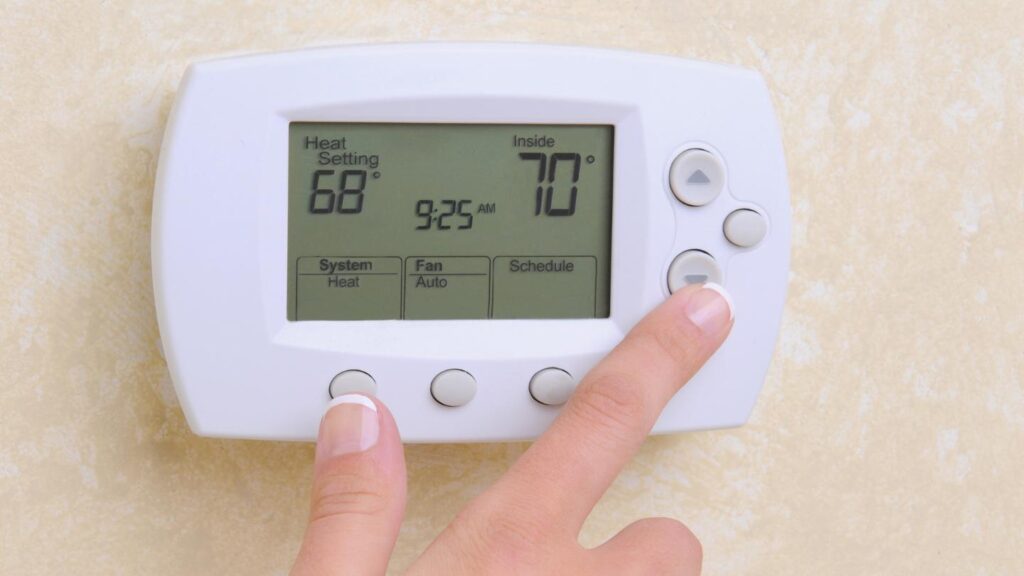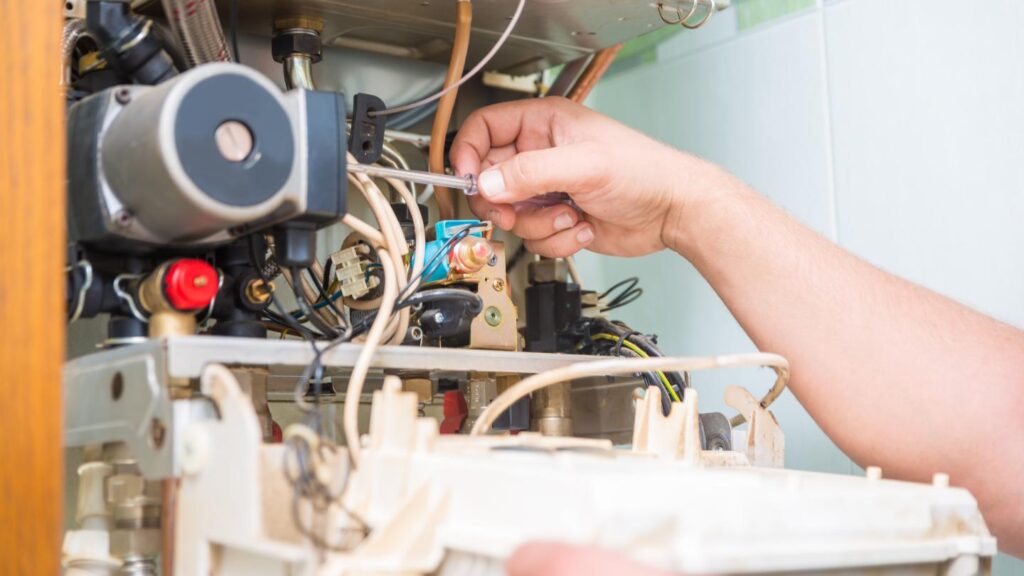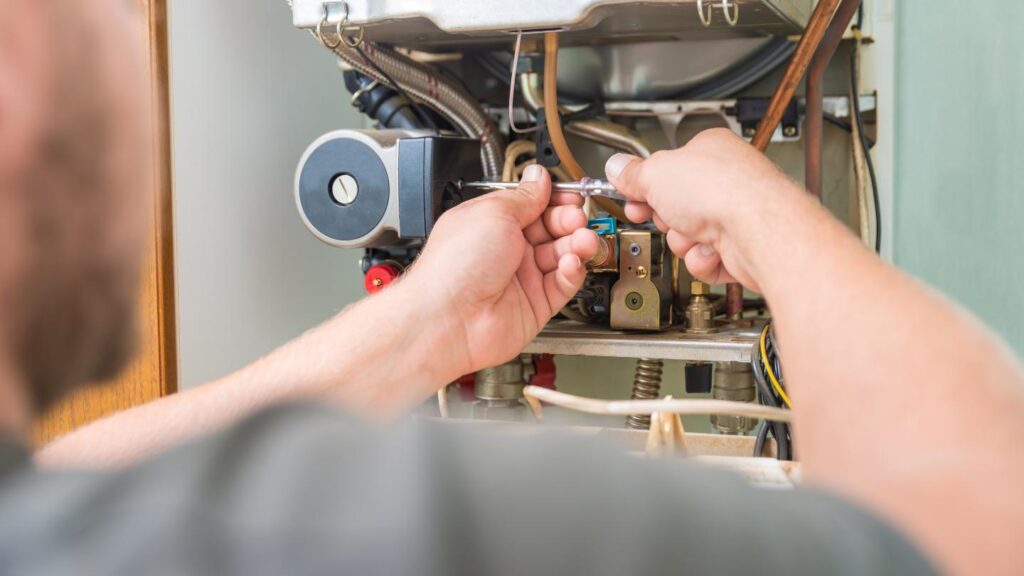Reasons Why Your Furnace Is Blowing Cold Air and How to Fix It
If you’ve been feeling cold air coming from your furnace, you’re not alone. Many homeowners face this issue, especially during the winter months. A gas furnace blowing cold air can disrupt your comfort, but understanding the reasons behind this and how to fix them is the first step toward restoring warmth. Let’s dive into the common causes and solutions to keep your heating system working properly.
Understanding the Issue of Furnace Blowing Cold Air
A furnace blowing cold air can be a frustrating and chilly dilemma during winter. It’s essential to understand the issue to prevent further damage to the furnace and ensure a warm and comfortable home. A furnace blowing cold air can be caused by various factors, including a faulty thermostat, dirty air filter, or a problem with the furnace’s heating cycle. By identifying the root cause, you can take the necessary steps to fix the issue and restore warm air to your home. In this section, we’ll explore the common causes of a furnace blowing cold air and provide troubleshooting tips to help you identify and fix the issue.
Read more: What Are the Causes of Black HVAC Filters?
Initial Cold Air During the Heating Cycle
When your furnace first starts, it’s normal to feel cold air coming from the vents. This happens because the furnace blower is pushing out room-temperature air in the ducts before heated air starts circulating. Typically, this process takes 10 to 15 minutes.
If your system doesn’t start blowing warm air after this initial period, it’s time to investigate further.
Common Reasons Why Your Furnace Is Blowing Cold Air

Your furnace blowing cold air might stem from one of the following issues. Here’s how to address them effectively:
Incorrect Thermostat Settings
- Ensure your thermostat is set to “HEAT” and not “COOL.”
- Set the thermostat fan to “AUTO” to avoid circulating cool air unnecessarily.
- Double-check the schedule on your programmable thermostat to ensure it matches your heating needs.
Dirty Air Filters
- A clogged air filter restricts airflow, causing your furnace to overheat and shut off the burners.
- Replace your furnace filter every three months or more frequently if you have pets or allergies.
- Clean air filters improve airflow and prevent the heater from blowing cold air.
Pilot Light Problems
- For gas furnaces, a blown-out pilot light is a common reason for no heat.
- Carefully relight the pilot light following your manufacturer’s instructions. If it doesn’t stay lit, the pilot light assembly may need attention.
Overheating Furnace
- When your furnace overheats, safety features shut down the burners, leaving only cool air blowing through the vents.
- Regularly clean or replace dirty air filters to maintain proper air flow.
- Schedule annual maintenance to prevent overheating in older furnaces.
Additional Factors That Cause a Furnace to Blow Cold Air

Sometimes, less obvious issues might cause your furnace to blow cold instead of warm air.
Gas Supply Issues
- An inadequate gas supply can prevent the combustion process, leaving your furnace blowing cold air.
- Verify your gas valve is open and that your natural gas supply is uninterrupted. For persistent issues, call a professional HVAC technician.
Clogged Condensate Line
- Blockages in the condensate drain lines can trigger safety switches, causing your furnace to blow cool air.
- If this happens, contact an expert to clear the condensate line and ensure the system operates safely.
Leaking Air Ducts
- Air ducts with leaks allow warm air to escape and mix with cooler air, leading to uneven heating.
- Professional duct sealing ensures maximum efficiency and eliminates cool air from entering the system.
Faulty Furnace Control Board
- The furnace control board regulates key operations. Malfunctions may disrupt the heating process, causing your system to start blowing cold air. Issues with the furnace’s heat exchanger can also lead to the furnace blowing cold air.
- If resetting the system doesn’t help, call a professional HVAC technician for a thorough inspection.
Furnace Component Issues
- Faulty pilot light or electric ignition can lead to cold air blowing.
- Dirty flame sensor may cause the furnace to blow cold air.
- Regular maintenance prevents cold air issues and ensures efficient operation.
Heat Exchanger and Coil Issues
A cracked heat exchanger or a clogged coil can cause a furnace to blow cold air. A cracked heat exchanger can compromise the integrity of the heating system, leading to safety concerns and reduced heating efficiency. A clogged coil can reduce the furnace’s ability to absorb heat efficiently, resulting in cold air blowing from the vents. Regular cleaning and maintenance of the heat exchanger and coil can help prevent these issues and keep your furnace running smoothly.
Computerized Control Issues
Modern furnaces are controlled by computers, and sometimes, a simple reset can resolve the issue of a furnace blowing cold air. However, if the problem persists, it may indicate a faulty control board. A faulty control board can cause the furnace to malfunction, leading to cold air blowing from the vents. It’s essential to contact a professional HVAC technician to diagnose and fix the issue, ensuring your furnace operates correctly and provides the warm air you need.
Preventative Maintenance Tips to Avoid Cold Air Problems

Keeping your heating system in top shape minimizes the chances of your furnace blowing cold air. Here’s how:
- Schedule HVAC maintenance twice a year, ideally in spring and fall.
- Inspect and replace furnace filters regularly to prevent clogged filters from restricting airflow.
- Ensure the pilot light assembly and flame sensor are clean and functioning.
- Check thermostat settings seasonally to avoid accidental disruptions.
Troubleshooting Tips to Prevent Furnace from Blowing Cold Air
To prevent a furnace from blowing cold air, it’s essential to perform regular maintenance and troubleshooting. Here are some tips:
- Check the thermostat setting to ensure it’s set to “heat” mode and the temperature is set high enough.
- Verify that the air filter is clean and not clogged.
- Check the gas supply line for leaks or blockages.
- Ensure that the air ducts are not leaking or blocked.
- Check the pilot light and flame sensor for damage or malfunction.
- Perform regular maintenance on the furnace, including cleaning and inspecting components.
By following these tips, you can help ensure your furnace operates efficiently and prevents cold air from blowing through your vents.
Conclusion
At Total Comfort Cooling & Heating, we specialize in keeping your home comfortable all year round. Whether your gas furnace is blowing cold air or your air conditioner isn’t working properly, our team is here to help.
Here’s why customers trust us:
- Experienced technicians who understand all aspects of the HVAC system.
- Fast, reliable furnace repair services for Port Charlotte and surrounding areas.
- Preventative maintenance plans to keep your heating system working at peak performance.
- 24/7 emergency services for those unexpected moments.
FAQs
Why is my furnace blowing cold air instead of hot air?
Your furnace might blow cold air due to thermostat issues, dirty air filters, or a pilot light problem. Total Comfort Cooling & Heating can quickly diagnose and fix these issues.
How often should I replace my furnace filter?
We recommend replacing furnace filters every three months. Dirty air filters can restrict airflow and cause your heating system to overheat.
What should I do if my gas furnace won’t stay lit?
Check the pilot light and ensure the gas valve is open. If the problem persists, contact our team for expert furnace repair services.
Stay Warm with Total Comfort Cooling & Heating
If your furnace is blowing cold air, trust the professionals at Total Comfort Cooling & Heating to restore warmth to your home. Call us today for reliable, efficient service in Port Charlotte!
READY FOR YOUR NEXT HEATING OR COOLING PROJECT?
Contact us to get a quote and see why our customer service is recognized as the best in the industry.




